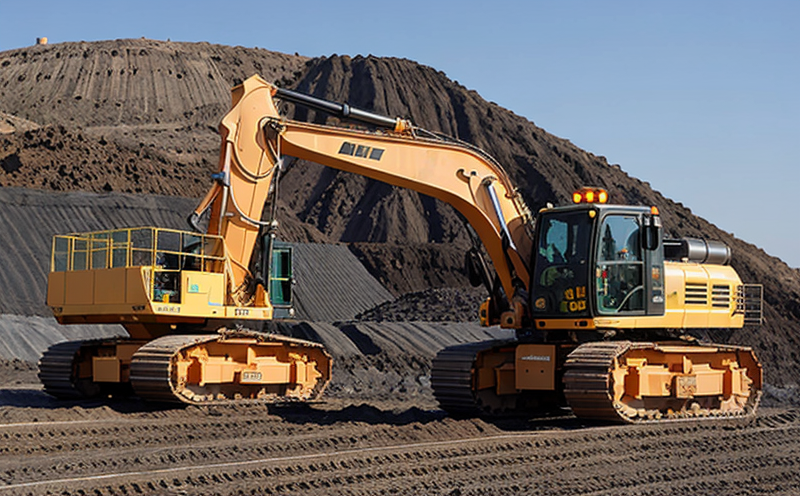DIN 22261 Part 3 Conveyor Belt Tensile Testing
The DIN 22261 series of standards provides comprehensive guidelines for testing conveyor belts used in various industrial applications, particularly those within the mining sector. This part specifically focuses on tensile testing which is crucial to ensure the durability and reliability of conveyor systems.
Tensile strength plays a pivotal role in determining whether a conveyor belt can withstand the mechanical stresses encountered during operation. In mining environments where belts are subjected to heavy loads over long distances, it's essential that they perform consistently under strain without failure. By adhering to DIN 22261 Part 3, manufacturers and end-users alike gain confidence knowing their equipment meets stringent quality benchmarks.
The process involves preparing test specimens according to specified dimensions outlined in the standard document. Once prepared, these samples are subjected to gradually increasing tension until they break. Measuring both maximum load capacity before failure occurs as well as elongation rates provides valuable insights into how resilient different types of conveyor belts might be under actual working conditions.
Understanding this information allows operators to make informed decisions about which products best suit their specific needs. For instance, if increased reliability is paramount due to harsh operating environments or high throughput requirements, then selecting a belt with superior tensile properties becomes critical.
The DIN 22261 series ensures that all tests conducted follow international best practices ensuring consistency across various labs globally. This standardization promotes interoperability between different pieces of equipment and contributes significantly towards improving overall operational efficiency within the mining industry.
By leveraging this testing method, companies can optimize their conveyor systems leading to reduced maintenance costs and longer service intervals ultimately contributing positively to both safety standards and productivity levels.
Why It Matters
The importance of conducting DIN 22261 Part 3 tests cannot be overstated when it comes to ensuring the longevity and reliability of conveyor belts used in mining operations. These systems form an integral part of material handling processes throughout underground mines, surface quarries, and other extraction sites.
Given the challenging nature of these environments where extreme temperatures, abrasive materials, and constant motion are commonplace, selecting appropriate conveyor belts is crucial for maintaining optimal performance. Tensile testing helps identify belts capable of withstanding these conditions without compromising safety or operational efficiency.
In addition to enhancing reliability, compliance with this standard also supports broader goals like sustainability initiatives aimed at reducing waste and energy consumption. Efficient conveyors contribute to lower emissions by minimizing downtime associated with repairs or replacements resulting in reduced fuel usage.
For quality managers responsible for overseeing procurement activities, adhering to DIN 22261 ensures that they source only the highest quality materials thus protecting their reputations while simultaneously benefiting end users who rely on dependable infrastructure. Compliance enhances trust between stakeholders and fosters collaboration among industry partners.
Applied Standards
| Standard | Description |
|---|---|
| DIN 22261 Part 3 | Tensile testing method for conveyor belts. |
| ASTM D4957 | Safety requirements for rubber- or plastic-covered fabrics used in belting. |
Scope and Methodology
| Aspect | Description |
|---|---|
| Type of Testing | Tensile testing. |
| Test Specimen Preparation | Belt samples cut to standard dimensions (typically 50 mm wide x 200 mm long). |
| Testing Equipment | Universal Testing Machine compliant with DIN requirements. |
| Load Application | Tension applied at a constant rate until failure occurs. |
| Data Collection | Maximum load and elongation measured throughout the process. |
The methodology outlined here strictly adheres to DIN 22261 Part 3 ensuring accurate results every time. The use of a universal testing machine guarantees consistent application of tension, allowing for precise measurement of both tensile strength and elongation rate. These metrics provide critical data used during analysis.
It's important to note that while other standards like ASTM D4957 may apply depending on the specific material composition of the conveyor belt, DIN 22261 Part 3 remains the primary reference for tensile testing in this context due to its industry-wide recognition and acceptance.





